
views
Use a plug-in GPS blocker.

A plug-in GPS blocker creates an interference signal that blocks vehicle GPS tracking. Simply plug it into your car’s cigarette lighter or auxiliary power outlet. When you turn the car on, the blocking device also turns on and your vehicle disappears from GPS monitors. To deactivate it, turn your car off or remove the device. Double check the description before purchasing to determine if the blocker has a wide enough range to suit your needs. Generally, more expensive trackers block signals within a wider radius than cheaper ones. Keep in mind that it’s not illegal to own a GPS blocker, but it is illegal to use one in most cases since they can interfere with emergency communications.
Carry a handheld GPS blocker.
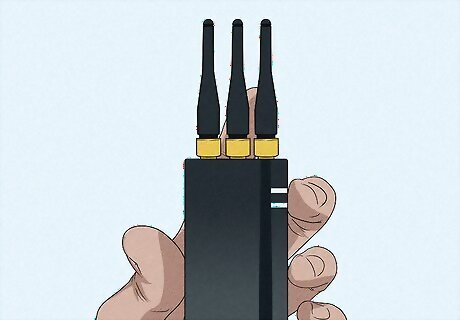
A handheld blocker jams GPS signals from the palm of your hand. Instead of plugging it into your vehicle, manually activate the device with a button or switch. Remember to turn off or deactivate the device when you stop driving (or else you’ll continue to scramble GPS and cell signals around you). Operating a GPS blocker is illegal in the majority of cases since it can jam or scramble emergency communications. Keep this in mind if you’re considering purchasing one.
Wrap the GPS device in aluminum foil.
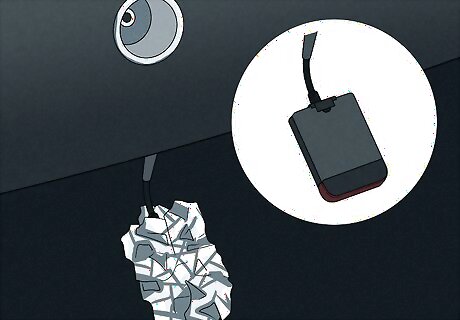
Any electrically conductive metal will scramble a GPS device’s signals. The simplest, cheapest, and easiest option is to simply wrap the GPS device in aluminum foil whenever you want your location to remain hidden. The only catch is that you have to know where the tracker is and have access to it. A metal box can also effectively block your vehicle’s GPS tracker, assuming it can be easily removed and put into a box. If you suspect there’s a hidden GPS device in your car, search the underbody, under the hood, in data ports, and under the seats or carpet to find, remove, and wrap it.
Remove the GPS tracker’s battery.
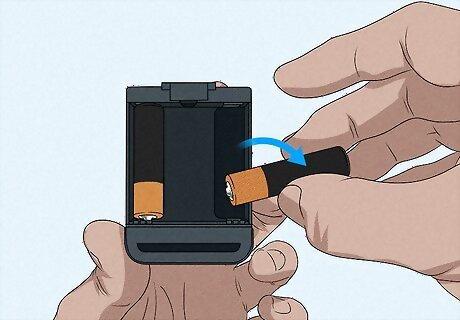
If the GPS tracker has no battery, it can’t transmit a signal. First, locate the GPS tracker. If it’s connected to your vehicle by a magnet or a data connector plug, just tug the device free and remove the battery to stop the signal. Afterward, dispose of the battery and GPS device to ensure it doesn’t continue to transmit your location. If the GPS tracker is hardwired to your vehicle, it’s best to have a professional mechanic remove it to avoid causing electrical problems to your car.
Disable location tracking on your cell phone.
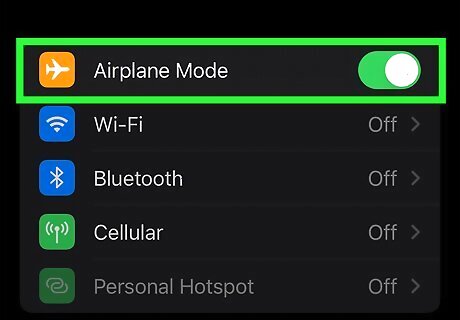
Cell phones reveal your location as easily as a GPS system. The easiest way to mask your location is to turn on “Airplane Mode” (this turns off the cell and WiFi radios). Then, turn off your location services, reporting, or history in your phone’s settings app to turn off the GPS tracking. On some phones, Airplane Mode will also turn off the GPS radio. Turn the phone off and remove the battery to ensure you can’t be tracked. The downside is that you won’t be able to use your phone at all while it’s off. Some sources suggest using a cell phone jammer to block GPS signals. While this does work, it is illegal to operate a jammer in the United States.
Search the exterior of your vehicle.

GPS trackers can be taped or magnetically attached to the outside of your car. Search for suspicious looking boxes, probably with antennas. Use a flashlight to look in hard-to-reach areas like the undercarriage or in the wheel wells. Here are some of the most likely places to find a tracker: The undercarriage, particularly on or near the fuel tank. Inside the wheel wells. Underneath the front or rear bumpers. On the roof (if you have a tall SUV or truck). Inside the sunroof’s retraction slot. Under the hood (most likely behind the radiator, by the batteries, in the air ducts, or in the air filter).
Examine the interior of your vehicle.

GPS trackers can be discreetly plugged in or hidden inside your car too. This is probably only the case if you suspect that someone you know (who has access to your car) planted a device, like a spouse or an ex. Search these common places where they might hide one: In the diagnostic port (usually to the bottom left of the steering wheel). Under the seats (or even inside the upholstery). Underneath floor mats. Underneath the carpet. In the trunk or hatchback. Plugged into the data collector (usually on the underside of the steering wheel).
Find the GPS device with a handheld locator.
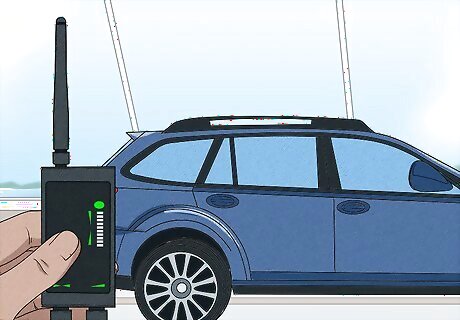
This handy tool detects outgoing GPS signals from your vehicle. Use one of these if you can’t visually find the GPS device inside or outside your vehicle. Stand within 5 metres (16 ft) of your vehicle and do a full scan. If a GPS signal is detected, the locator will beep and flash. Scan your vehicle multiple times since not all GPS systems transmit a constant signal. Handheld GPS locators can be found online and are sometimes called electric sweepers. Locating devices will find an active or real time GPS tracker, but can’t find a passive or logger tracker.



















Comments
0 comment